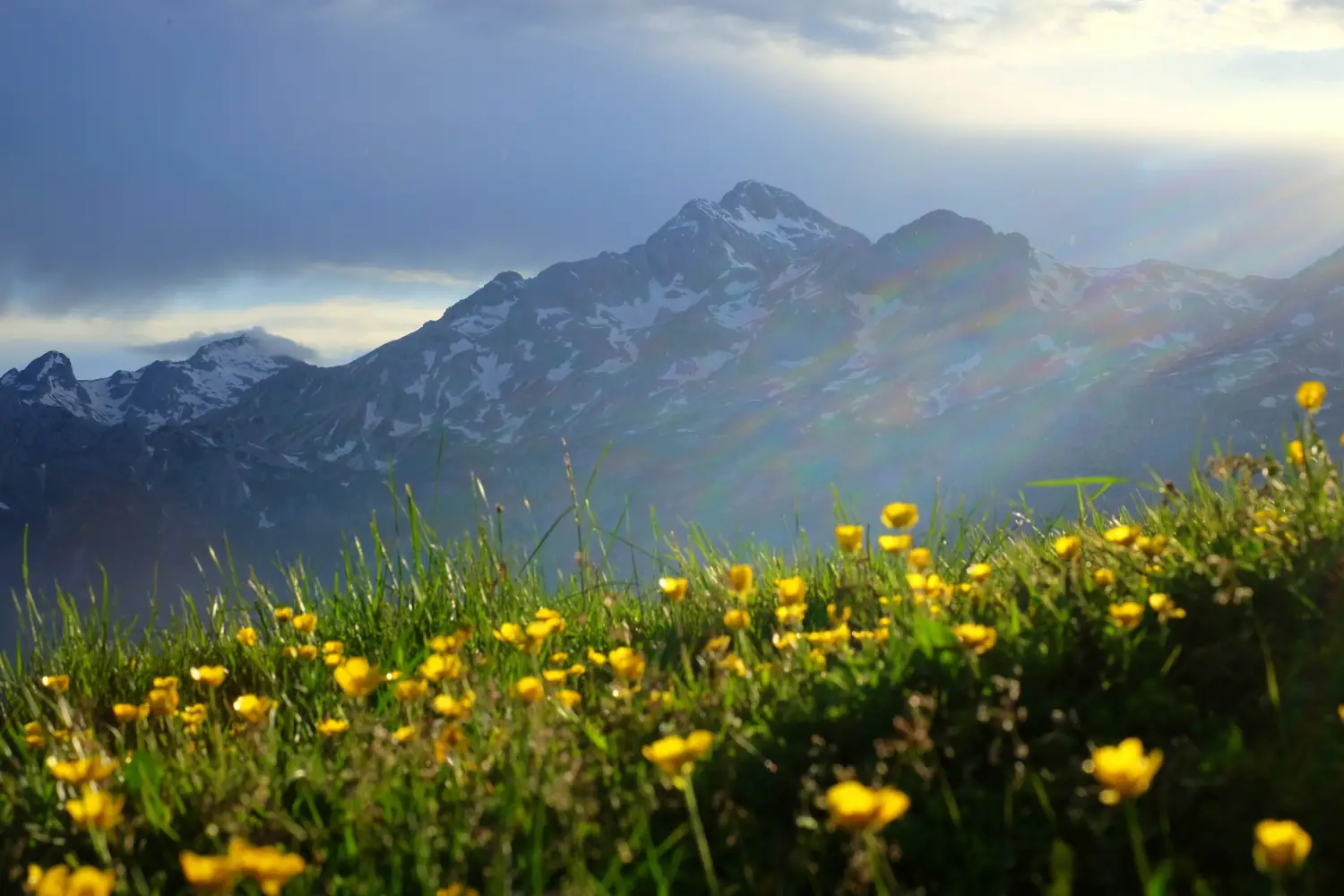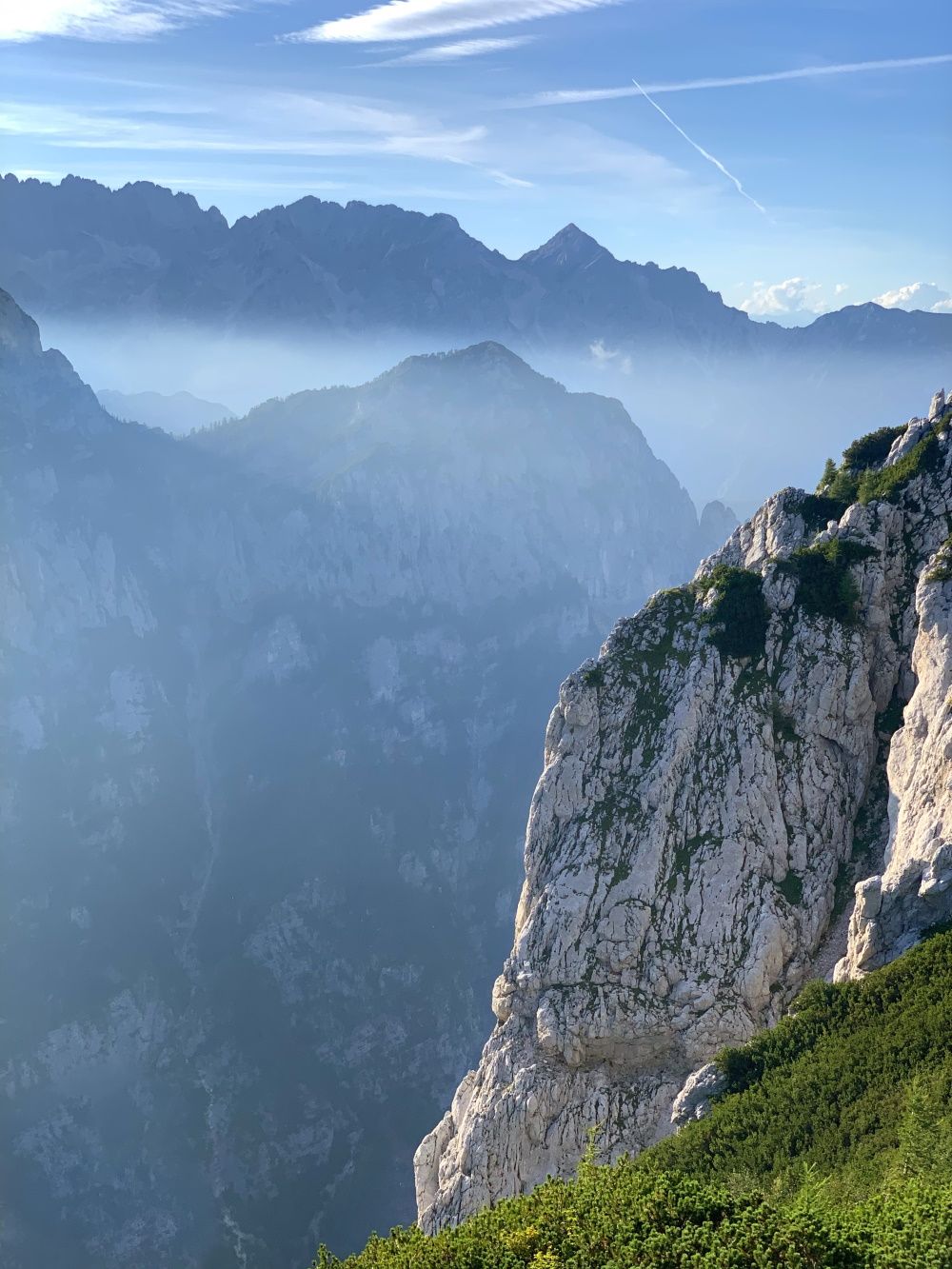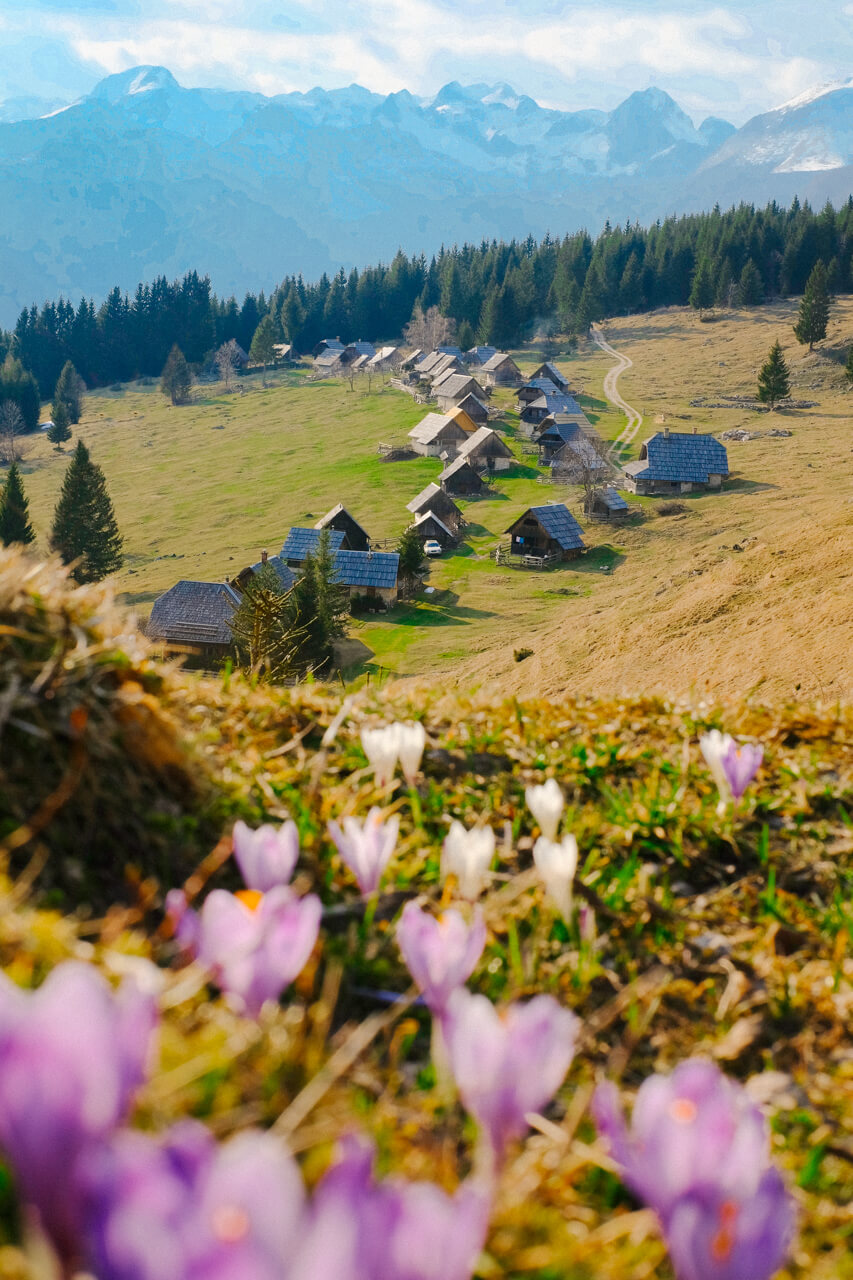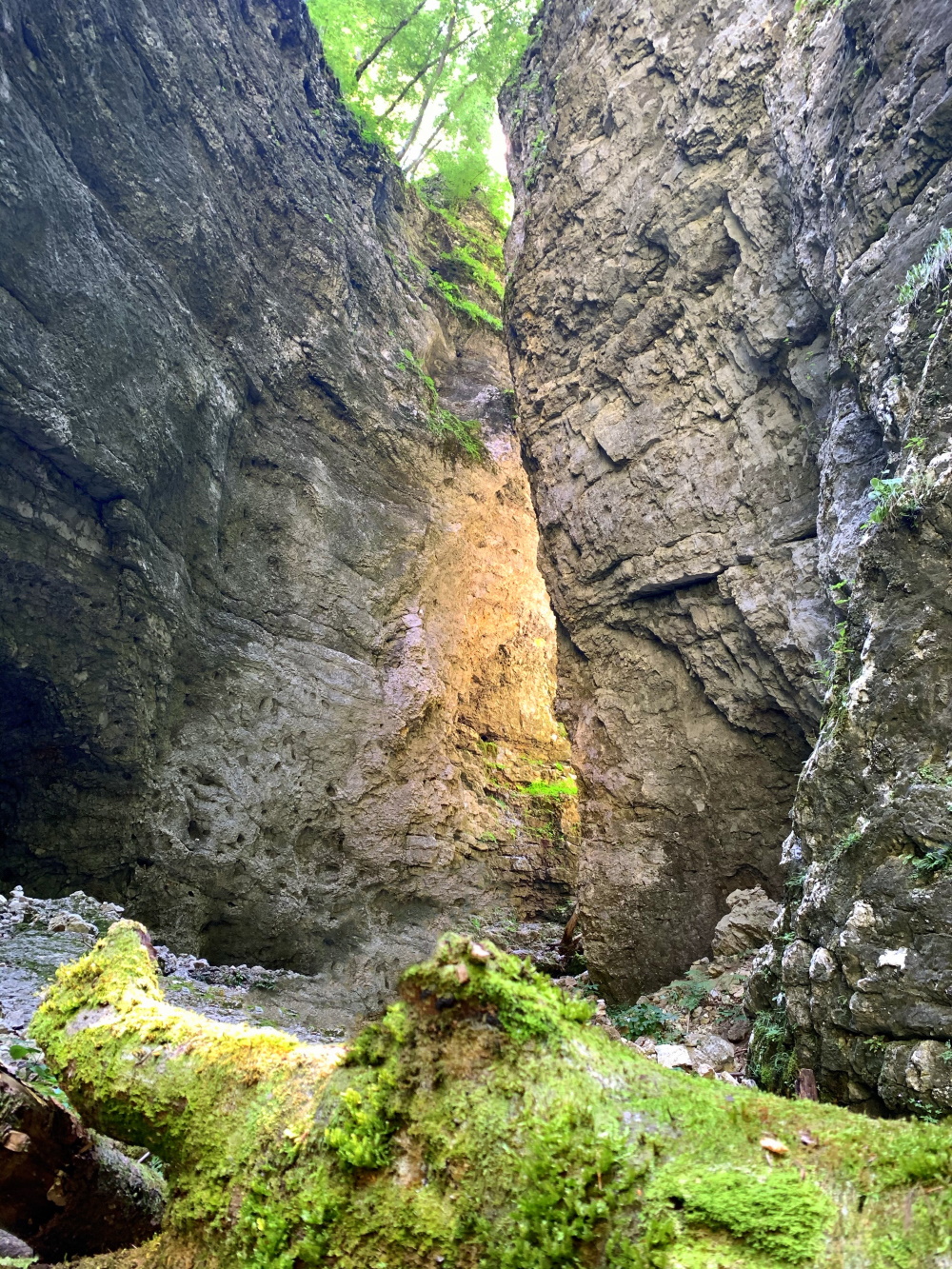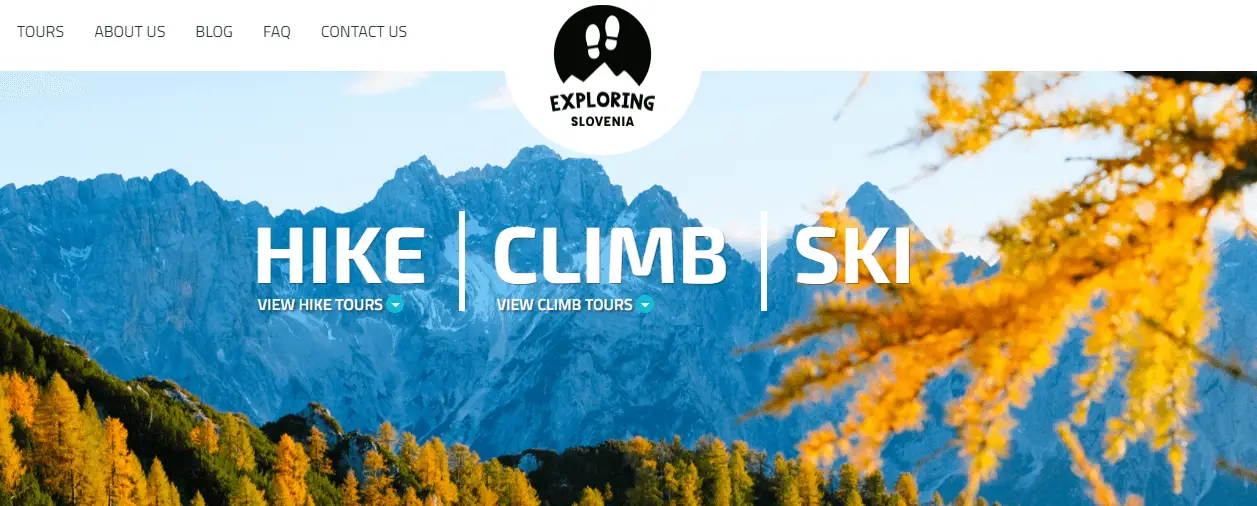Travel
STA, 5 November 2020 - The closure of restaurants, hotels and other tourism facilities in the wake of Covid-19 has put companies in the sector in an unenviable position. Some have already been forced to lay off staff, but most of them are hoping the planned sixth stimulus package will help preserve jobs.
The key measures to protect jobs in tourism and hospitality would be to cover the total cost of the furlough scheme and to compensate business for income loss.
Unemployment was not on the rise in Slovenia in October despite partial lockdown. The companies did not repeat mistakes from the first wave of the epidemic when they were quick to let go workers and re-hire them after the government measures stepped in.
The Gorenjska unit of the Employment Service received only one announcement of major downsizing in tourism and hospitality in the autumn, Drago Perc with the unit told the STA, noting that one company said it would lay off some 30 staff.
Many companies are making use of the furlough scheme in the meantime, however Marcela Klofutar, manager of Vila Podvin and Linhart hotel in Radovljica, believes that the measure is not sufficient.
In the spring businesses were refunded the entire compensation for furloughed workers, meaning 80% of their pay, whereas now they only get EUR 870, which means that employers have to cover the rest, that is at least EUR 1000 per gross pay, she said, adding that businesses closed due to the epidemic cannot afford that.
Numerous companies in the sector are without any income. Vila Podvin is trying to get by until the sixth stimulus law is passed to see whether the pay compensation measure would be the same as in the spring.
"If that is not the case, people would have to register as unemployed," she warned, pointing to Austria as an example of good practice since the country has ensured compensation totalling 80% of last year's revenue.
Sava Turizem, one of the major Slovenian tourism companies, is also stressing the importance of stimulus measures. If the government does not endorse measures proposed by the tourism sector, then layoffs could not be avoided, said the company.
Given the sector has been worst hit by Covid-19 ramifications, additional boosts are necessary, including direct one-off aid to offset losses and a new edition of holiday vouchers, said Sava Turizem.
Meanwhile, some are not relying on government support but only on themselves. Matija Blažič, managing Hotel Ribno in lakeside resort Bled, has already laid off 40% of his employees.
"If the state measures were sufficient and announced in advance, it might have been different, however everything is passed last minute in Slovenia," he said.
"There does not exist a tourism company that could pay the entire team for half a year without work." Lakeside resort Bled might see better days around Easter next year, according to him.
A pessimistic outlook for the winter tourism season is shared by Janez Hrovat, the mayor of mountain resort Kranjska Gora and also a businessman trying to survive in the struggling sector.
He believes many, particularly those who invested heavily prior to the epidemic, will be in trouble and hopes the second wave will bring similar measures to those in the first.
Blaž Veber, the head of Turizem Kranjska Gora, has also urged stepping up boosts and following the examples of Austria and Germany regarding compensating revenue loss.
He believes the government measures have been effective so far, however the situation is worsening and the sector does not require help but compensation since it is not its fault it cannot function. It would probably take years to get to the pre-Covid level, he added.
Many providers of tourism services as well as owners of bars and restaurants are also concerned about having generated negative cash flow during the coronavirus crisis, which is thus expected to be followed by the debt crisis, heard yesterday's online debate on tourism after Covid-19.
The discussion, hosted by the Ljubljana School of Economics and Business, featured the head of Fraport Slovenija airport services Janez Krašnja, the head of the Association of Slovenian Hoteliers Gregor Jamnik and restauranteur Martin Jezeršek.
The last two urged the government to provide grants in the sixth stimulus package, warning that the debt crisis would halt the development of the sector.
Krašnja meanwhile said that the aviation industry has had a catastrophic year and that the recovery could last until 2024 at the minimum.
However, air passengers are still expected to be those who spend the most and the industry will have to adjust to the new normal, he said, adding that coronavirus tests could become part of airport checks in the future.
All our stories on covid-19 and Slovenia
STA, 14 October 2020 - Austria extended on Wednesday border control on its borders with Slovenia and Hungary by another six months, until 11 May 2021. Austria's Interior Minister Karl Nehammer listed migration pressure, safety concerns and Covid-19 as reasons for the move.
Nehammer informed European Commission vice-president Margaritis Schinas, European Commissioner for Home Affairs Ylva Johansson, President of the European Parliament David Sassoli and interior ministers of EU and Schengen zone countries of the move, the Austrian Interior Ministry said in a press release.
Austria introduced border control on Schengen zone's internal borders in 2015 amid a surge in migrations. Germany did the same on its borders with Austria, France, Sweden, Denmark and Norway, which is not an EU member.
Under the Schengen zone rules, reintroducing border control within the Schengen zone is possible for six months in case of a serious threat, and the measure can be extended based on approval from the European Commission.
The current period of Austria's border control would expire on 11 November.
Slovenia has been protesting against Austria's border checks, arguing that the external border of the Schengen zone was well protected by Slovenia.
All our stories on coronavirus and Slovenia
STA, 8 October 2020 - Lonely Planet, a leading publisher of tourist guidebooks, has selected Bled, Slovenia's Alpine town with a picturesque lake and island, among the top 10 destinations which offer unique and memorable experiences.
The second edition of the list of recommended destinations puts Bled sixth alongside the world's most famous sights such as Petra, Uluru or Yellowstone.
Lonely Planet has described it as a place of natural beauty with a unique island with a church, labelling Lake Bled with the island the most photogenic lake on the planet.
"Bled making it among top 10 destinations recommended as providing memorable experiences by one of the main media in travel is a great honour for Bled and Slovenia," Slovenian Tourist Board (STO) boss Maja Pak said in a written statement on the occasion.
She is particularly happy that Lonely Planet has given a special emphasis to sustainable tourism management and recommended the glamping Garden Village Bled.
This is not the first time that Bled or Slovenia has made it to a Lonely Planet list of recommended destinations. In 2017, Bled was for instance put among top 10 Instagram winter destinations, while in 2018, Slovenia made it to its list of top ten best-value destinations to visit in 2019.
STA, 8 October 2020 - Germany has added four Slovenian regions, including Ljubljana and its surroundings, on its list of international risk areas. Travellers from these regions must undergo a 14-day quarantine.
Osrednjeslovenska, Zasavska, Gorenjska and Savinjska were added to the quarantine list, the Robert Koch Institute announced on Wednesday evening.
Primorsko-Notranjska and Koroška, sites of major outbreaks respectively in a meat processing plant and a residential home for people with mental disabilities, were on the list before.
This means that six of Slovenia's twelve statistical regions are now considered risk areas by Germany.
Germany's red list is determined by the federal ministries of health, interior and foreign affairs.
The threshold is 50 new confirmed infections per 100,000 inhabitants in the past seven days, but other criteria are considered as well.
The latest statistics on coronavirus and Slovenia, and the latest police news on red, green and yellow list countries. All our stories on coronavirus and Slovenia. Can I transit Slovenia? Find out from the police...
STA, 29 September 2020 - More than 820,000 electronic tourist vouchers worth over 113 million euro, which is a third of the total sum available, were partly or fully redeemed by yesterday, fresh data from the Financial Administration (FURS) shows.
The Economy Ministry, which circulated FURS's data, said a recent survey had shown 90% of Slovenian residents intended to spend the vouchers until the end of the year, the deadline to use them.
The poll carried out by Valicon between 18 and 21 September showed that 36% of all permanent residents had already spent their vouchers, whereas 50% still intended to do so. Only 7% of those polled said they would not use their vouchers, the ministry said in a release on Monday.
As many as 57% of those who paid for accommodation and/or breakfast with vouchers were very happy with the service; the average satisfaction mark on the 1-5 scale was 4.4.
As part of the third stimulus package taken amid the Covid-19 pandemic, the government distributed vouchers worth EUR 345 million to help the tourism industry.
An adult permanent resident received EUR 200 and children and youth under 18 EUR 50. First payments with vouchers were possible on 19 June.
STA, 25 September 2020 - The January-August period saw the number of tourist arrivals plummet by 47% to almost 2.4 million, while tourist nights dropped by 40% to almost 7.1 million compared to the same eight-month period in 2019, figures released by the Slovenian Statistics Office (SURS) on Friday show.
The number of domestic tourists rose by 26% in the eight-month period, with nights they generated rising by 34%.
Foreign arrivals plummeted by 70% in this period, and the nights they generated by 67%, SURS data for January-August show.
The drop in foreign tourists was meanwhile partly offset by domestic tourist, who largely opted to spend their summer holidays in Slovenia.
As a result, the summer season - July and August - saw a mere 16% drop in overall tourist nights to 4.6 million compared to last year's summer tourist season.
More than two thirds of all nights in the two months were generated by Slovenian residents, whose tourist nights rose by 159%.
The number of nights generated by foreign tourists in July-August meanwhile plummeted by 65%.
The bulk of nights generated by foreign tourists in the two months were generated by Germans, yet the figure was nevertheless by 22% lower.
Drops in nights by tourists from other countries were even bigger, standing at -67% for the Dutch and for Italians, at -42% for Austrians and -49% for Hungarians.
Drops by nights generated by Australians, South Koreans, Swedes, New Zealanders, Maltese and Israelis were at more than 95%.
Israelis for instance generated around 128,000 nights in the 2019 summer season as opposed to below 600 this year.
At municipality level, the bulk of tourist nights in July and August were spent in the mountains (1.6 million), on the coast (1.2 million) and in spas (929,000).
Compared to last year's summer season, the sharpest fall in tourist nights was witnessed by the city of Ljubljana (-75%), followed by other urban municipalities (-45%).
Municipalities with spas and on the coast meanwhile reported about upbeat tourist night figures - up by 9% and 4%, respectively.
The coastal municipality of Piran led the way with the biggest number of nights among all of Slovenia's 212 municipalities at 686,000, up 1% from July-August in 2019.
The figures for the second quarter meanwhile show that at least 15% of Slovenia's residents aged at least 15 went on a private trip, a drop of two thirds over the same period last year. A third of around 1.5 million residents who did not go on a trip cited the pandemic as the main reason.
This year's April-June quarter saw the same number of private trips as the January-March quarter, yet considerably fewer than the second quarter last year.
The April-June period has been in recent years a busy tourist period with around a million private trips taking place. This year's figure reached only some 410,000.
An increasing number, or 52%, opted to go on a private trip around Slovenia, whereas Croatia topped the list of destinations outside the homeland (92%).
Today I’m going to take you to a place very special to me. So special that I keep returning there more often that I probably should considering I’ve got a hiking agency (Exploring Slovenia) that requires work on many tours around the Alps. This hike is simple, not too easy but also not too hard, and at 2,000 meters the top is still cozily covered with soft grass. There you can lay down and enjoy spectacular views of Triglav and other peaks of the Julian Alps to the west, the Karavanke Alps to the north stretching towards the northeast, and the Krma valley nestled between us and Triglav.
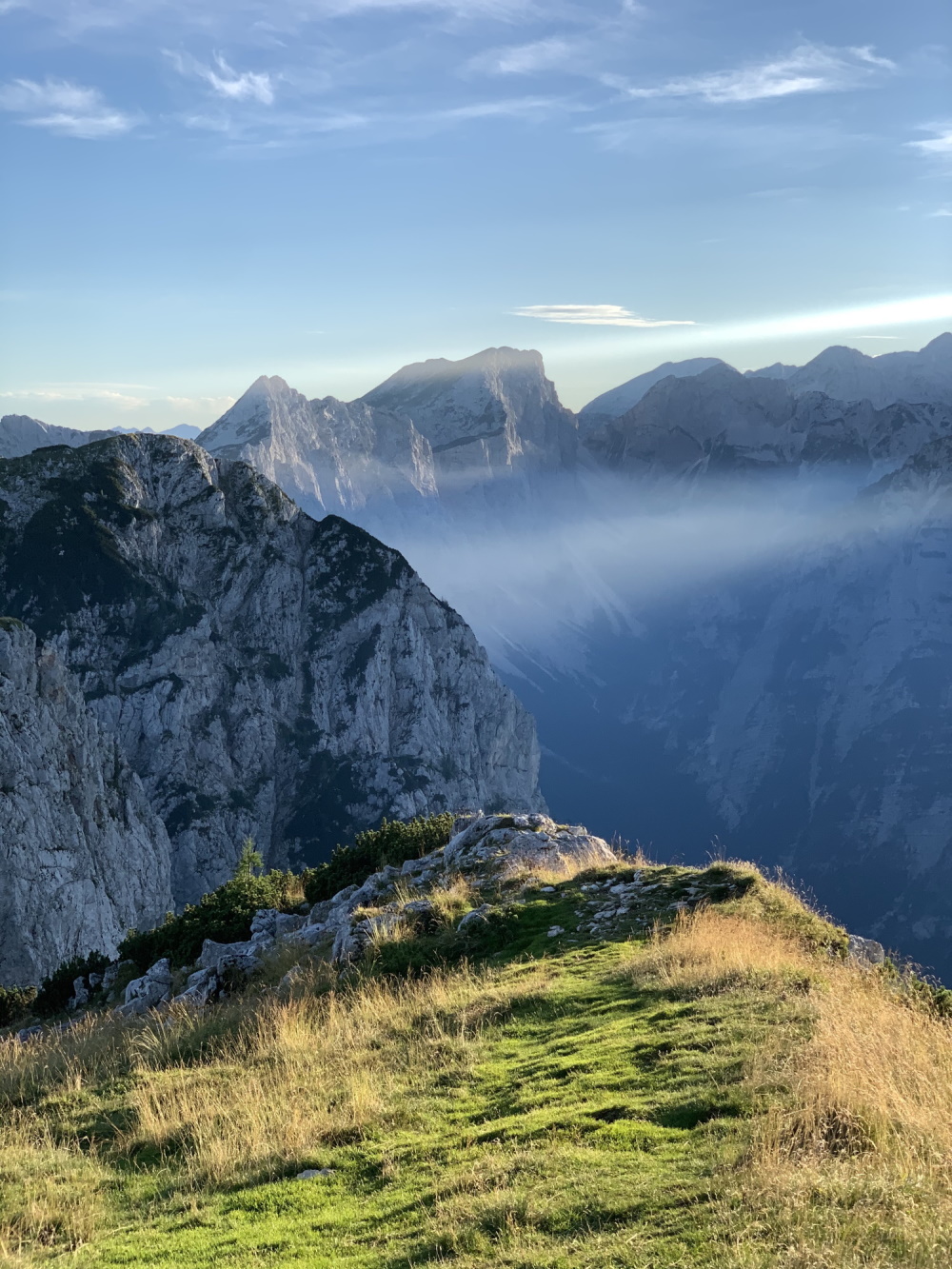
I’m actually not talking about just one peak, but a few peaks dotted along a beautiful ridge. You can start with Debela Peč, a broad 2,014-m peak on the far right once you reach the Blejska koča Hut, and then slowly make your way to the left following the ridge over to Brda, 2,008 m, Lipanski Vrh, 1,974 m, and finally Mrežce, 1,965 m. You can continue further on to Debeli Vrh, 1,962 m, and then return back down through a beautiful larch forest, which is actually what we offer in one of our tours above Pokljuka. Or you could even hike all the way to Viševnik and Mali Draški Vrh, but let’s leave that to the most avid of hikers.
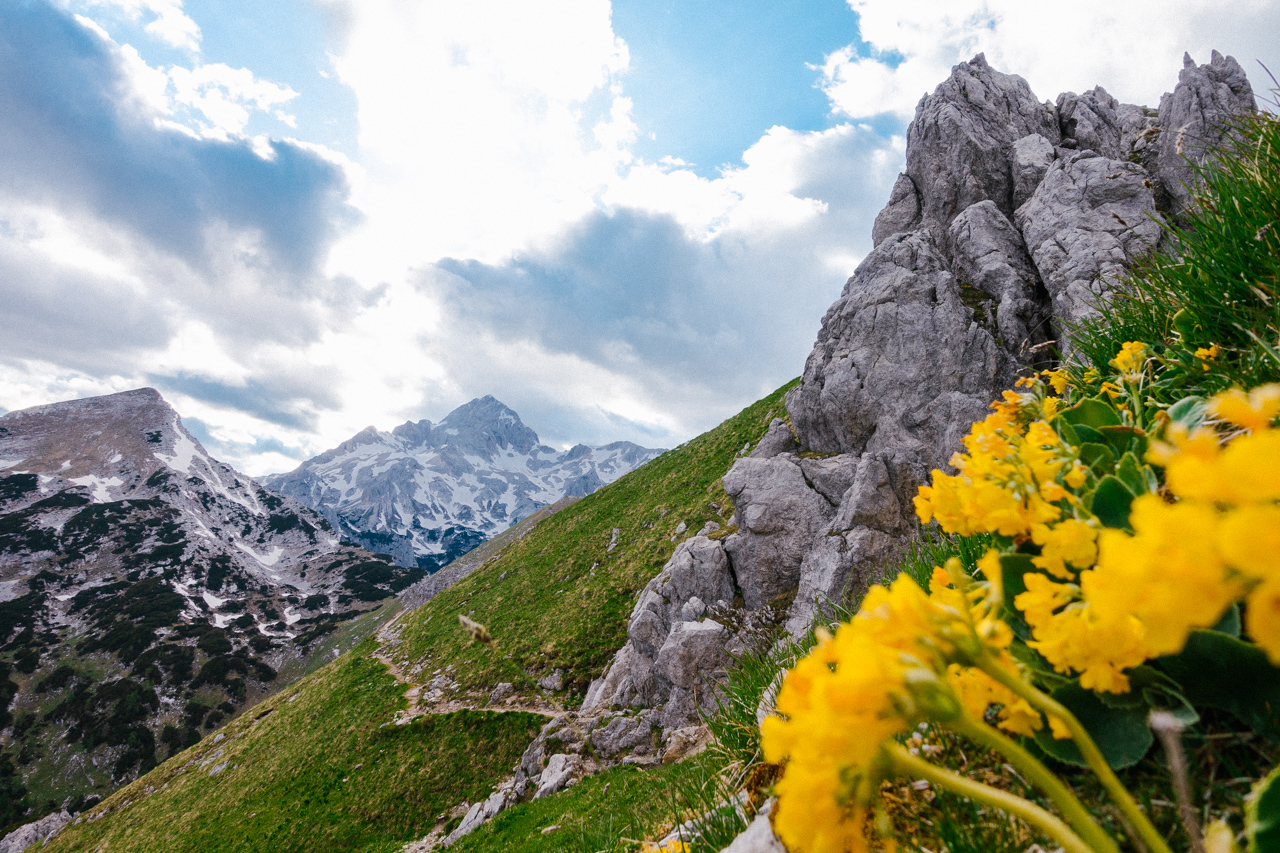
The ridge from Viševnik continues further on towards Mali Draški Vrh
While a few of the peaks might be fairly popular with the locals, and you can expect quite a few visitors on a sunny weekend, on weekdays the trails empty and the air instead gets filled with the whistling sounds of sturdy chamois.
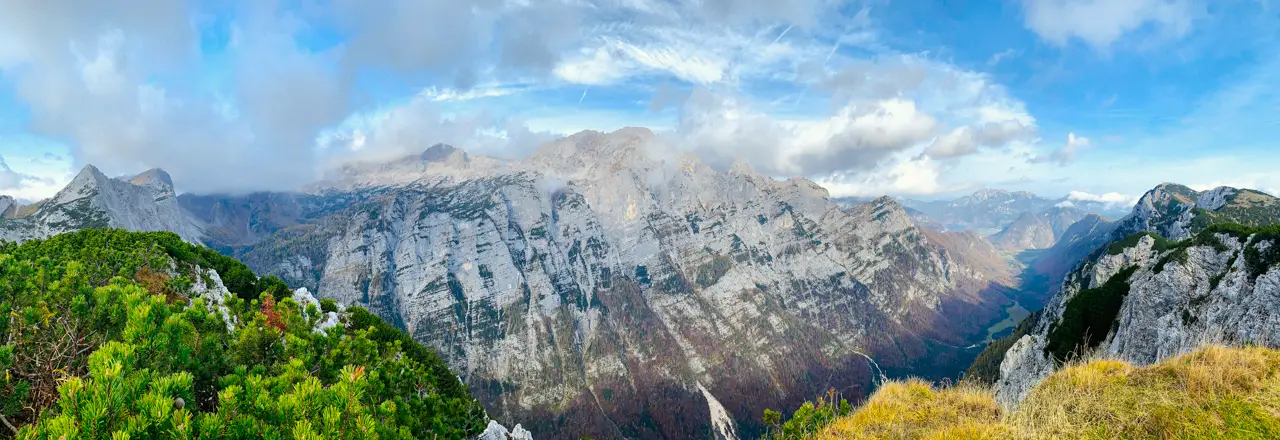
Soak in cinematic views of the soaring mountains across the plummeting 1000-meter deep glacial valley Krma
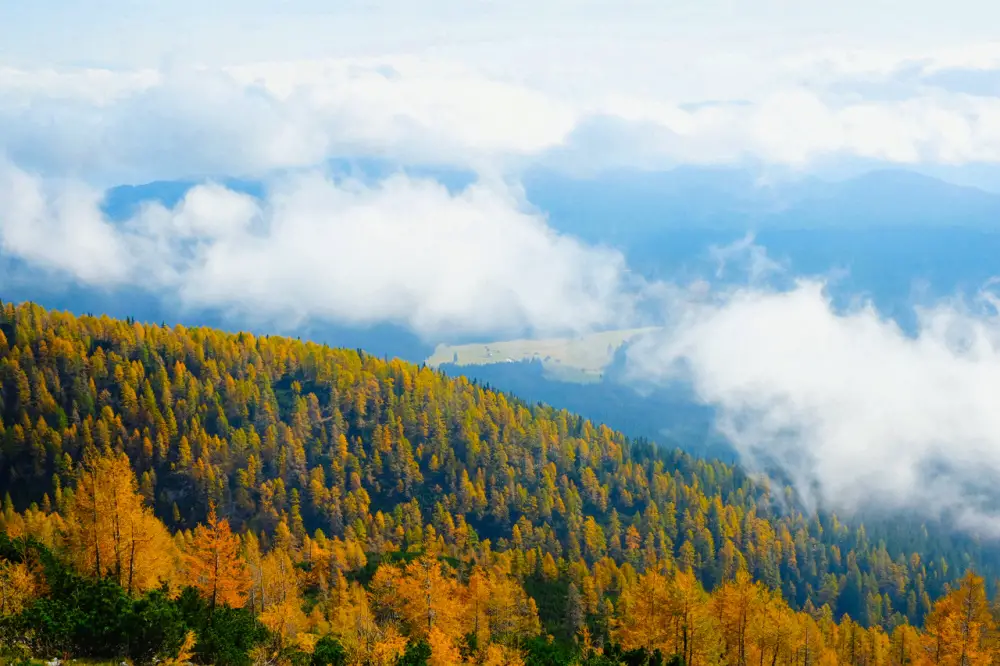
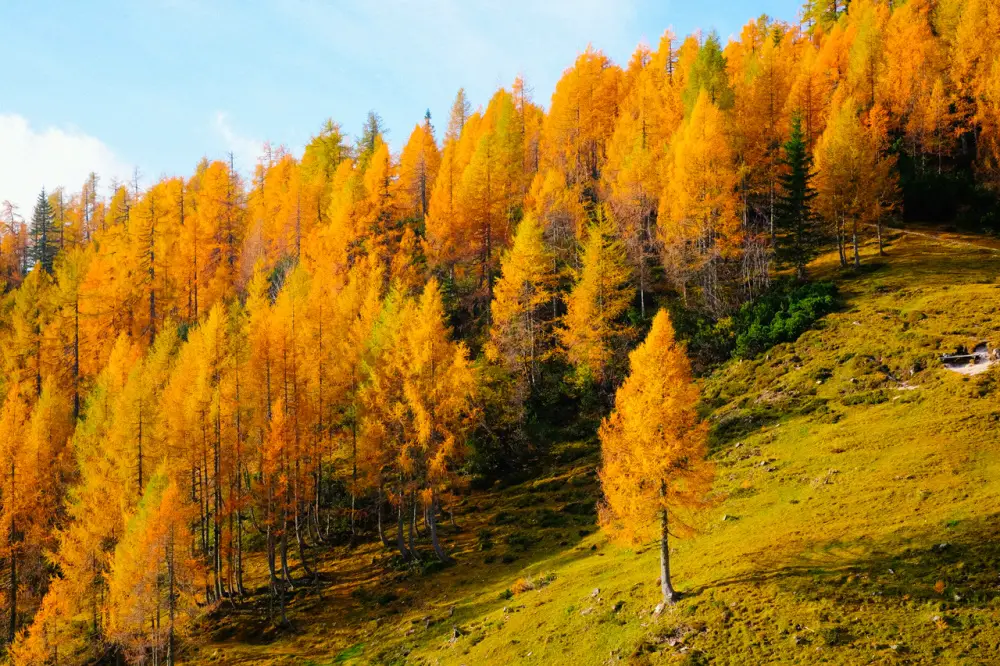
Lush larch forests along the trail sparkles golden in the sun
With many hiking options in those parts of the Julian Alps, one can walk the whole day or just a couple of hours, and that’s the true beauty of it. It makes the most sense to start the hike from Planina Zajavornik, a gorgeous meadow with old wooden houses in the middle of Pokljuka’s tall fir forest, or further up in Medvedova Konta, from where the first peak - Debela Peč is merely two hours away.
The trail is technically speaking easy, it also ascends gradually, partly in the forest and partly in the sun. As such it’s appropriate for beginners, kids, elderly hikers, and those who have problems with exposure. At Exploring Slovenia we also offer it as one of the most basic hikes in the Alps above Bled to visitors who want to get a feel for the mountains but have no real experience yet. Extending the tour along the ridge doesn’t only mean prolonging it time-wise, but also spicing it up with more exposure and a few short parts with wires (via ferrata). Hiking the whole ridge - from Debela Peč to Mrežce, adds at least another two hours, and the whole descent down from Mrežce takes another two.
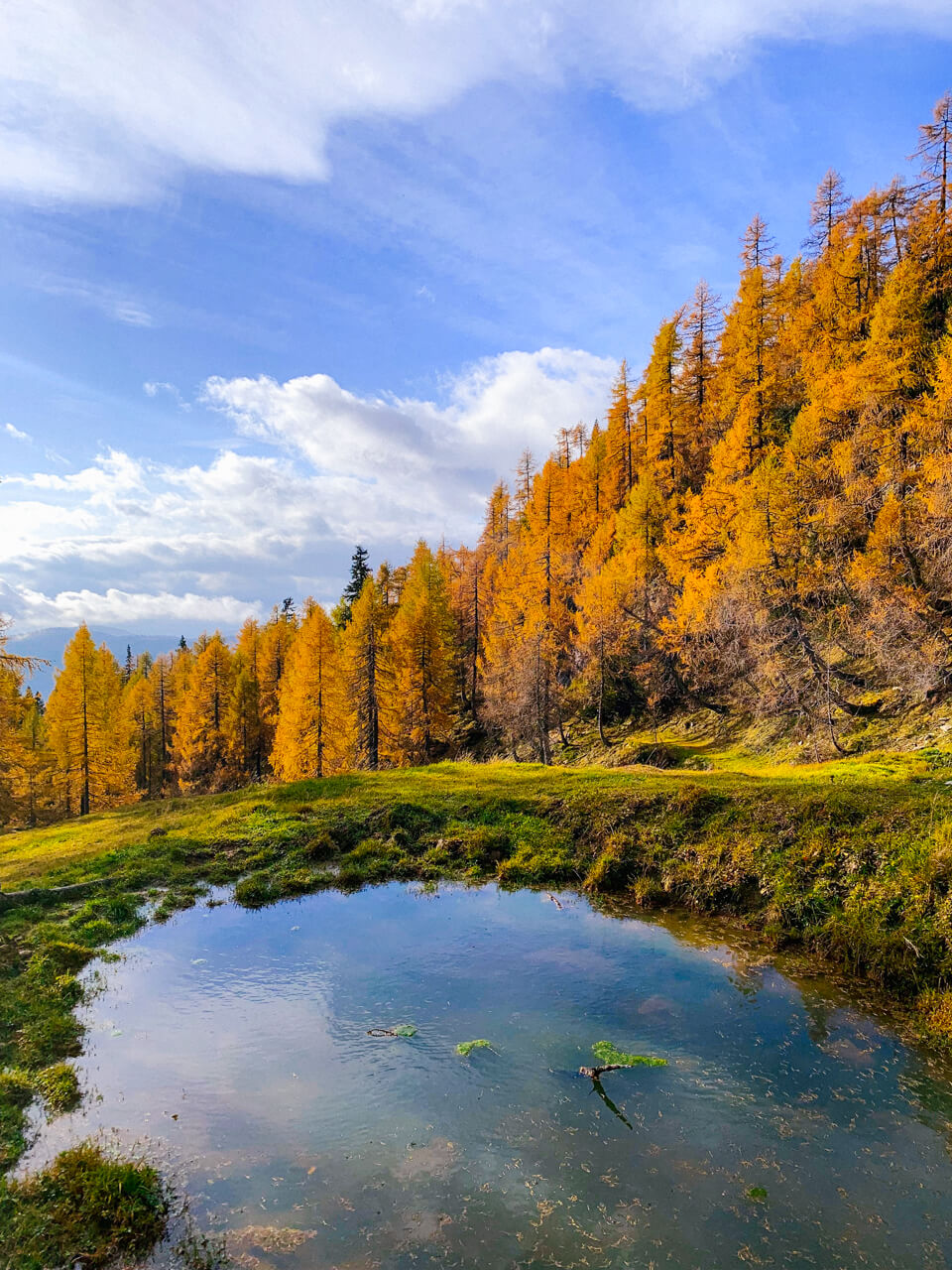
A must stop on the way? Regardless of whether going up to Debela Peč or coming down from Mrežce, you should make a stop in the Blejska koča Hut and grab a plate of barley soup ričet, goulash, beef broth with pasta, or sour cabbage soup jota, and obviously potica, that traditional pastry with ground walnuts. Delicious, and you’ll burn the calories walking!
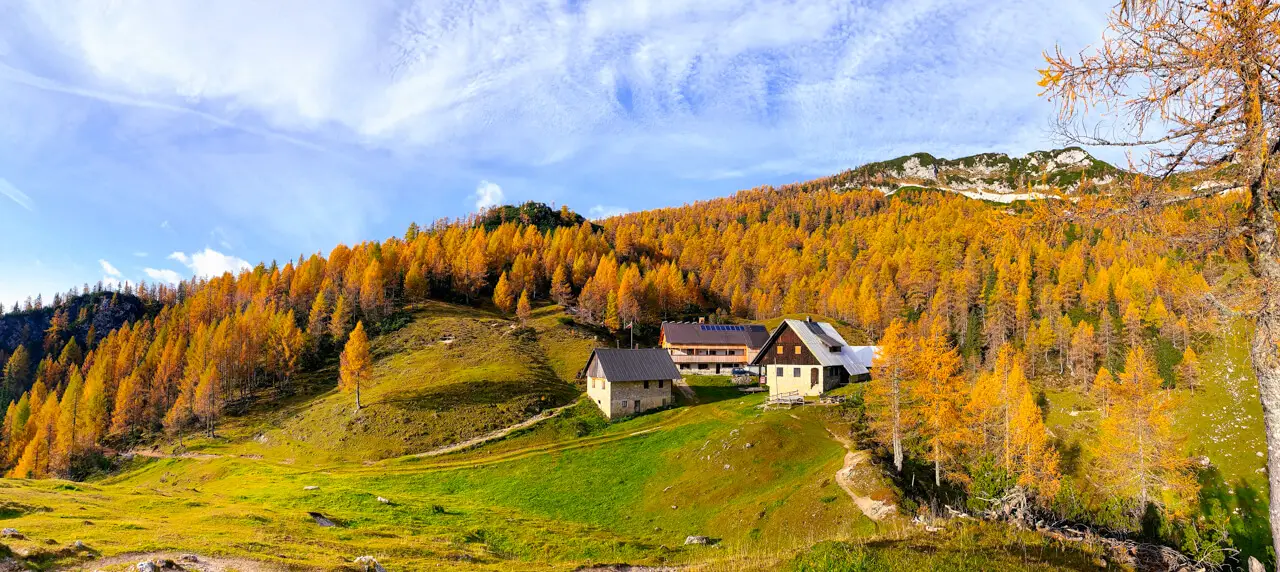
A little extra to see in Pokljuka? If you still have the energy and time to make a few stops on the way back to the valley, I would suggest not missing the beautiful little Alpine village of Zajamniki (an easy hour hike from Rudno Polje) and the Pokljuka Gorge, through which actually used to go the shortest natural passage to the Pokljuka plateau, back in the olden days.
Zajamniki with flowering crocuses
The well-hidden Pokljuka Gorge
Interested in hiking in Slovenia? Check out the range of tours on offer at Exploring Slovenia - including to the top of Triglav - as well as our interview with the author.
Yesterday the UK released the following message for Britons travelling in Slovenia, and Slovenes heading to the UK - any updates will be found on the official site.
The Foreign, Commonwealth & Development Office (FCDO) advises against all non-essential travel to Slovenia, based on the current assessment of COVID-19 risks in the country.
The FCDO is not advising those already travelling in Slovenia to leave at this time. Travellers should follow the advice of the local authorities on how best to protect themselves and others, including any measures that they bring in to control the virus.
If you are returning to the UK from Slovenia on or after 4am on 19 September, you will need to self-isolate on your return (unless you are exempt). Check the latest guidance for England, Northern Ireland, Scotland and Wales.
The FCDO is not advising you to cut short your visit. You should contact your tour operator or airline if you have any questions about your return journey.
The latest statistics on coronavirus and Slovenia, and the latest police news on red, green and yellow list countries. All our stories on coronavirus and Slovenia. Can I transit Slovenia? Find out from the police...
STA, 10 September 2020 - US luxury and lifestyle travel web portal Conde Nast Traveler has picked Slovenia as the top holiday destination for 2021. Tucked between old favourites Italy and Croatia, Slovenia offers Michelin-starred food, excellent wine, turquoise rivers, glacier-fed lakes and soaring, snow-capped peaks, it says on its web site.
The country's most famous landmark, Lake Bled, is described as being "more peaceful than any of Europe's better-known lakes". "For now, at least, it remains blissfully unbusy; a place of wide-open spaces, splendid solace and restoratively pristine air."
Conde Nast Traveler further highlights the country's cuisine and wine, and the Michelin-starred restaurants - Hiša Franko led by chef Ana Roš and the Strelec restaurant at Ljubljana Castle.
Slovenia is followed on the list of best places to visit in 2021 by England's Yorkshire, Portugal's Melides, the United Arab Emirates and Canary Islands.
You can read the full article here
STA, 10 September 2020 - After a relatively successful summer season at Slovenia's leading alpine resort, Kranjska Gora ski-lift operators are preparing for winter. They have further improved the artificial snow system, hoping to begin the skiing season in late November. They will try to entice families with new attractions and cheaper tickets.
The resort started pre-selling ski passes in August and is offering a special 15% discount until the end of September. In addition to combined passes with other Slovenian ski resorts, a new type of season pass has been made available especially for Kranjska Gora.
According to their representative Anders Rydelius, they have particularly attractive offerings prepared for families, whom they would like to attract in greater numbers in the future. They hope Slovenians will prefer skiing in their home country this winter, as the prices of ski passes are rising in the surrounding countries, while the epidemiological situation also remains a contributing factor.
Slovenian guests, who used their tourist vouchers en masse in Kranjska Gora in July and August, helped to keep visitor numbers on a par with last year's. However, due to the epidemic, the summer season started later than usual this year, which also reflected on the bike park. The park and chairlift remain open every day in September, and on weekends in October.
They are also improving and adding new activities for families in the bicycle park and new, easier routes that are more suitable for beginners. In recent years, a theme park for children was set up, with additional activities and entertainment to follow soon. The bulk of the investment was in the snowmaking system - at around 400,000 euro this year.
"The key improvement is that we will be able to cover the slopes with snow very quickly and prepare the trails, if temperatures are low enough," said Rydelius. They will try to make skiing possible as early as the end of November or the beginning of December. At the same time, they remain positive about the development of the epidemic and restrictions related to it.
STA, 9 September 2020 - The operator of the Postojna Cave has been forced to lay off a number of employees as it grapples with a 83% drop in visit due to the coronavirus crisis. The management will announce the exact number of redundancies to employees by Friday, while Primorske Novice reports that up to 60 out of the 174 employees are to be sacked.
Postojnska Jama told the STA on Wednesday that it would need to "dismiss a larger number of workers" as a last-resort measure for the sake of long-term sustainability of operation.
The number to be laid off will first be announced to employees at meetings on Thursday and Friday, added the operator of the cave which has been virtually empty since the spring, as foreign guests, which represent the bulk of the visit, are few and far between.
The Koper-based newspaper meanwhile reported that the company will lay off up to 60 out of the 174 employees. Postojnska Jama has not confirmed the number, while labelling the consequences of the pandemic a "natural disaster".
The Postojna Cave is a global destination and foreign guests represent 93% of total visit. "It is evident that the loss in enormous", the company said, adding that there were also fewer Slovenian guests, with their number dropping by 20%.
Visit to the cave is not covered by the government's tourism voucher scheme and the site was closed for 83 days during the lockdown, which is only the second time it was closed in its 200-plus-year history.
Postojnska Jama said layoffs were inevitable as the future was uncertain, as no major improvement was expected next year.



